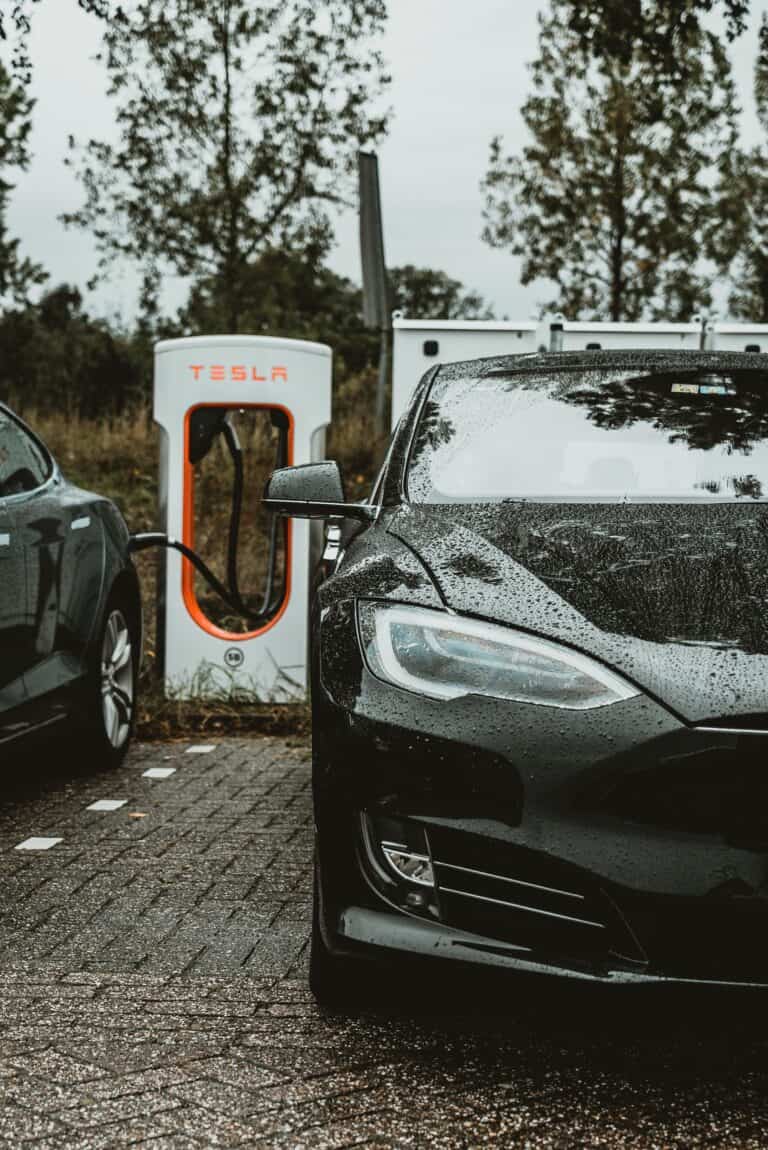Best practices for electronic vehicle storage

When you have an electric vehicle that is rarely driven or you need to store one for a long period of time. The optimal environment is cool and dry with a consistent temperature between 68 and 77 degrees. Moisture and extreme heat 104 degrees and above can damage the battery over time and reduce the range. Keep the battery between 40% and 60% of full charge. For short time days to weeks keeping it unplugged is fine. For months or years plug it in and set the vehicle to storage charge mode or battery maintenance mode.
General maintenance tips for EV storage
If possible start the vehicle every few weeks and let it run for a while. This will help maintain the battery but it will also help with a lot more. It will help keep the tires from getting flat spots on the bottom. You can also invest in some tire ramps to help mitigate this issue. It will help prevent mechanical issues with the brakes and suspension such as them getting stiff and needing service. Finally it will help keep the fluids moving in the system and prevent them from being too stagnant and having them degrade.
When going in for storage its not a bad idea to first wash and wax the car. This will help maintain the paint job and prevent corrosion. A good dust cover is also a good idea, and make sure the inside is clean too, you don’t want foul smells or mildew building up.
How long are EV batteries expected to last?
Federal law requires EV batteries to have a warranty guarantee of 10 years or 100k miles. California is even stricter at 15 years and 150k miles. Most manufacturers also build in extra capacity into the battery bank so that as cells degrade the unused cells will be enabled thus preventing loss of range. When shopping for an EV be careful to check the terms of the warranty. Some manufacturers will replace the battery after a certain percentage of the full capacity degrades while other manufacturers will only replace the battery if it fails completely.
Optimal conditions for the EV battery health in storage
Most EV batteries are actually made up of small cells of Lithium Ion batteries all connected together similar in size to AA batteries storage best practices for Lithium Ion batteries also apply to EV’s.
When kept at optimal conditions between 40% to 60% of full charge and a dry environment between 68 and 77 degrees any range reduction from sitting will be minimal. Extreme heat is the most damaging never store in direct sunlight or above 100 degrees this will quickly degrade the battery.
For extended periods of storage months or years be sure to plug in the car and set it to vehicle charge mode or battery maintenance mode. This will prevent the battery from going into a state of deep discharge which can be damaging to the health of the battery.
Do EV’s have 12 volt batteries in addition to the main battery?
Yes many EV’s have a 12 volt battery in addition to the battery bank that runs the car. These 12 volt batteries perform the same function they do in a gas vehicle. They power the vehicle’s low voltage electrical systems such as the lights, radio, and various sensors. This battery can be unplugged from the car during storage to prevent discharging and you can use a trickle charger on it to keep it fully charged. However in an EV this is not as critical as a gas vehicle because you do not need the battery to perform the starter function to actually turn on the vehicle.
Conclusion
Like traditional vehicles, long term storage of an EV can be hard on the vehicle. Following the above recommendations will help maintain the vehicle and keep any battery degradation to a minimum. Maybe invest in a EV storage location where they will maintain optimal conditions for the vehicle as well as security and keep an eye on it for you. Or ask a friend to check on it periodically if you will not be around.





